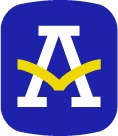It was that time in the school year where the children were learning about coins. Worksheets came home, and my 2nd-grade son struggled with every one. Before long we were battling over them nightly.
Using Real Money Makes It More Fun
I knew I would need to create another way to help him master this concept so I devised a game based on using real money to help him. First, I cut pictures out of a magazine of cars, boats, toys, and food. I glued them to index cards, and put a value on each of them. Some would just “cost” cents, while others combined dollars and cents. For example, a truck might cost $1.25, while a car might cost only 52¢. Some cards used the dollar format while others used the cents sign.
Next, I then collected some coins and bills and put them in a box. I made sure that I had dollar bills, half-dollars, quarters, dimes, nickels, and pennies available, because my goal was to teach everything he was learning in school in regard to money.
I told my son that I had a new game to play which we would play using actual money. This created a lot of excitement. The rules of the game were:
- We would each begin with five dollars. I gave us each two dollar bills, a half- dollar, and the remainder in quarters, dimes, nickels, and pennies.
- The cards would be placed in a stack face down, and we would take turns going first.
- As we picked up a card, we would need to put the correct amount of money into the box.
- The object of the game was to see who would spend all their money first.
At first, my son needed a lot of help with the game. We counted out the money together during the first games we played. Before long, he was starting to get the hang of it and was able to count out many of the combinations himself.
Adapting the Games
The worksheets became less and less of a problem, the more we played the game. He loved it, and asked to play over and over. We also used the real money as we worked on completing the homework. Now, instead of fighting over the work, he was anxious to do this assignment first.
As my son got better and better at using the money, I devised a variation of the game, putting points on each card and adding them up at the end of the game to see who won. In that version, we each played until we had no money left. This gave him practice in addition. We added a calculator a little later so he could check his own answers. This all provided valuable practice, and was a lot more fun than drilling him on his number facts.
Later that year, we adapted the game again, now practicing subtraction, using money. I used the same premise, but the object now was to make change from a ten-dollar bill as we “bought” the items pictured on the cards. The object sometimes would be to see who could buy greatest number of items with ten dollars. The winner of the game was the person ending up with the most cards at the end.
Homework and practicing difficult concepts became much easier when I realized that if I made it a game, we would both be better off, so spelling was the next thing I decided to tackle. Studying for the weekly test often became a battle, and I was determined to eliminate it.
Magnetic Letters and White Boards
I purchased a package of magnetic letters, and every day we would practice the spelling words while I was working in the kitchen preparing dinner. I would say the words, and he would spell them on the refrigerator using the magnetic letters. I purchased a small white board along with some colorful markers, and other days we would use the white board to practice. I would say the word, he would write it on the white board, and hold it up for me to see. I could be busy working in the kitchen and still check his work.
It was definitely more fun in his eyes to use the letters and write on the white board, than it would have been to just write the words on a piece of paper. I tried to remember this as I searched for more creative ways to help him study and master the basic skills.
Index Card Games
I often made concentration games to study vocabulary words, with the word written on one card and the definition on the other. We would play to see who would be able to match the most cards.
Index cards can be used to create concentration games of all kinds. It takes only minutes to make homemade study games if supplies are on hand. When school supplies go on sale in the summer, supplies of index cards that will last all year can be purchased for a very small investment.
Although it might seem like it is time consuming to make games, it actually is more time effective than fighting over studying. This game format made studying a time both my son and I looked forward to and definitely contributed to helping him master the skills he needed to be successful during the first few years of school.
Creating a Positive Attitude
Later, in my professional position as an elementary school principal, I was able to share my story with parents and suggest that they try my strategy. I told parents that although it may take a bit more time to make and play a game, the method will actually save time in the long run. Additionally, it creates a positive attitude about homework, rather than a negative and often adversarial one. Young children have years of homework ahead of them. Establishing a positive attitude about it will go a long way in the future.
Denise B. Geier, EdD, is a South Jersey resident, former elementary school principal and an Associate Professor of Education at Northcentral University in Prescott Valley, AZ.






